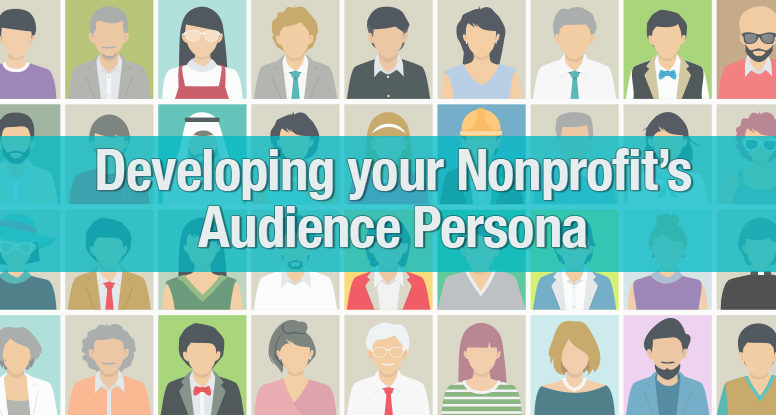
Developing your Nonprofit’s Audience Persona
One of the things we love to work on with our clients is marketing campaigns. We have rolled out an exciting new tool that helps turn your volunteers, staff, and supporters into marketers by providing them with a nonprofit campaign marketing toolkit. One of the “ingredients” necessary for a successful marketing campaign is an audience persona.
What is an audience persona?
If it sounds like a foreign term for you, don’t worry. We are here to break it down for you. An audience persona is a very critical marketing tool that can help you zero in on your target audience. If done well, it can help you’re nonprofit generate greater interest in your cause, attract more supporters as well as donors, and help you make decisions for your organization that extend well beyond marketing.
In a nutshell, personas are simply fictional profiles that represent key segments of your audience. These carefully created “avatars of sorts” are designed to help your nonprofit’s marketing efforts “speak” differently to individual demographics to boost engagement, funding, and more.
Without using them as a marketing tool, your nonprofit is merely assuming what content your audience wants to see. When you take this route, you risk creating content around what you think you know is best rather than information your audience is actually craving.
Why it’s Important
When your nonprofit effectively connects with its audience, it’s more likely to generate a following of individuals who know, like, and trust you. Stronger audience relationships can ultimately lead to larger donations, more volunteers, and more community support.
Your audience personas should trigger emotional responses that entice your followers to act. The whole point of these fictional profiles is to help encourage “conversion.” Achieving this will be a bit challenging, however, if you don’t know what pulls at their heartstrings in the first place.
How to Create an Audience Persona?
Building audience personas from scratch will first require some research, gut instinct, and a bit of creativity. You’ll first need to know your demographics. This should include the gender, age, income level, employment, location, and education of your present audience or followers. A great place to gather a lot of this information is Facebook, Twitter, LinkedIn, and Google Analytics. Another way to gather user data is through online surveys. You can create them through such platforms as Survey Monkey or Google Forms.
In addition to demographics, you will also want to identify their psychographics. Demographics will help to uncover the “who,” while psychographics will uncover the “why.” You will need to understand what moves them to take action, what they care about, and why. This deeper level will help you develop a full picture of who you are talking to so you can choose messaging and visuals that will speak to them on a more personal level.
Nonprofits will benefit most from multiple audience personas. One that will relate to donors. Another that will speak to volunteers and one that will speak to supporters. Of course, you can create more, but don’t ignore those three. When creating these fictional profiles, make sure you:
- Name your persona (Example: Anne Johnson, Jack Keller, etc.)
- Include a real-life image of your persona so everyone can truly envision what he or she looks like. Just visit a site like Creative Commons or iStockphoto and search for someone who exemplifies what your persona might look like.
- Create a brief bio for your fictional profile. Make sure you write it in a way that your audience will be able to relate to it. It should identify the user and their need.
To help you get started, we have created an audience persona worksheet. Fill out one worksheet for each persona you create.
Segmenting Your Audiences and Creating Goals
Each persona you create should ultimately speak to your segmented audience. Audience segmentation is simply the process of dividing people into groups. (Example: Millennials, Baby Boomers, etc.). Once you’ve clearly identified your groups, you must determine which segment closely ties into your nonprofit’s goals.
When you segment your audience, you’ll need to determine what type of content/message will prompt them to act. To do this, you’ll need to determine if they prefer to read touching stories, serious content, hard facts, etc. As you develop content and share it with your audience, monitor the analytics to learn how it performs. This will help you gauge what resonates with your audience.
When creating content for your segmented audience, remember that no two messages are the same. Each piece of content should be specifically catered to each group. After all, it only makes sense, considering that you’re encouraging them all to do different things.
Now What?
Once your persona is created, you can start crafting a message that will connect with that persona. Personas help humanize your marketing message, as you can better imagine you are speaking to or writing for one person vs. the entire online world.
Blog post by Alizah T. Epstein
 Alizah is a seasoned, award-winning, creative professional. She founded the Epstein Creative Group — a strategic branding and marketing firm — with the purpose of using design for the greater good. Alizah built a design firm that supports mission-driven organizations that want to improve our community, with a focus on women’s and children’s issues. She complements her creative skills with her analytical skills to create systems and processes that deliver an easy experience to her clients. She is also a speaker and mentor to nonprofits and women entrepreneurs. Through the Epstein Creative Group, Alizah has built a team of passionate, creative professionals who work on strategic branding and marketing projects that secure more donors and build awareness so these organizations can continue their good work. To learn more, visit epsteincreative.com. Design with purpose.
Alizah is a seasoned, award-winning, creative professional. She founded the Epstein Creative Group — a strategic branding and marketing firm — with the purpose of using design for the greater good. Alizah built a design firm that supports mission-driven organizations that want to improve our community, with a focus on women’s and children’s issues. She complements her creative skills with her analytical skills to create systems and processes that deliver an easy experience to her clients. She is also a speaker and mentor to nonprofits and women entrepreneurs. Through the Epstein Creative Group, Alizah has built a team of passionate, creative professionals who work on strategic branding and marketing projects that secure more donors and build awareness so these organizations can continue their good work. To learn more, visit epsteincreative.com. Design with purpose.

What do we do if we do not have an audience yet? Is there a place with data to help us create the audience personas? Thanks!